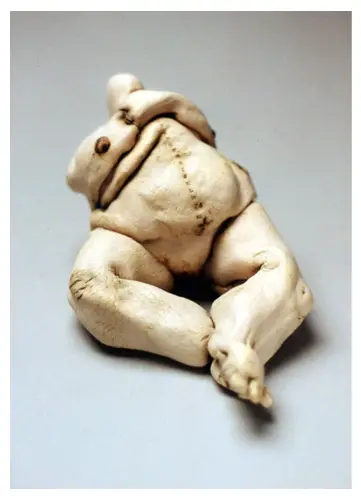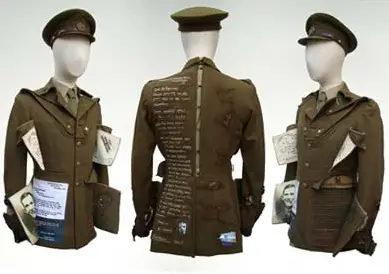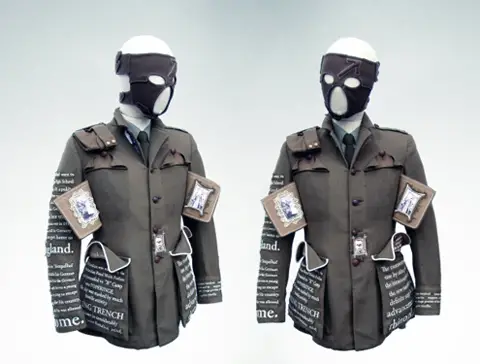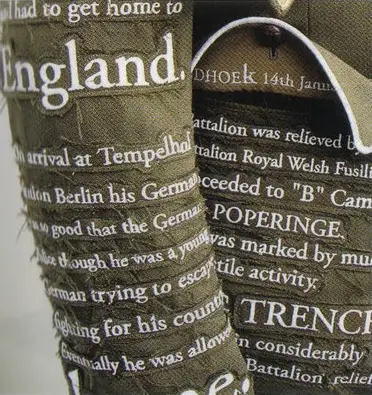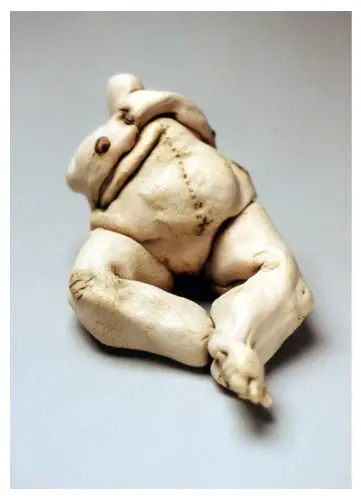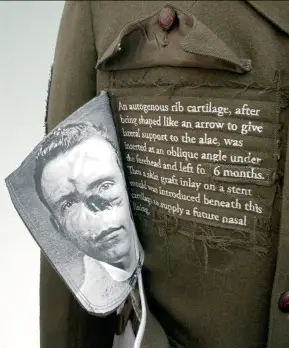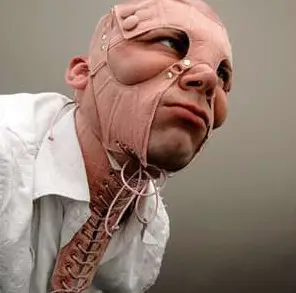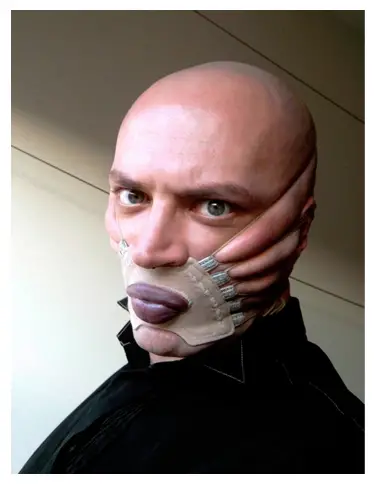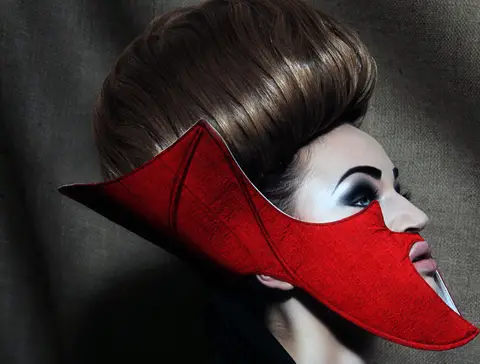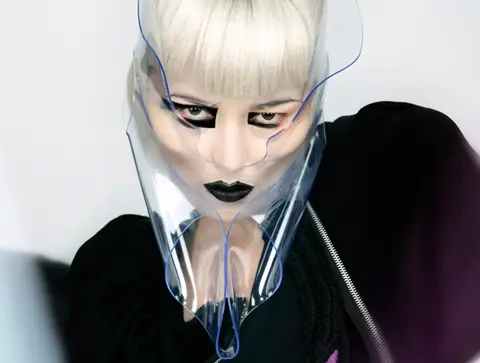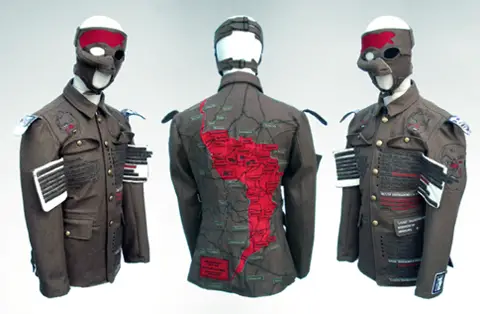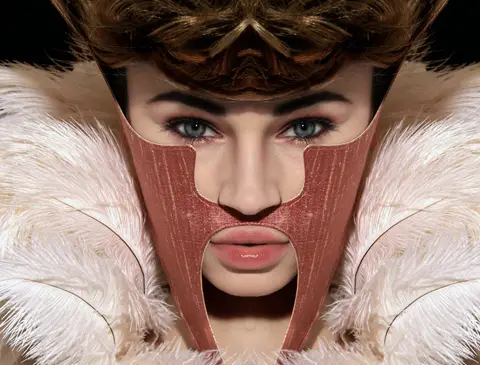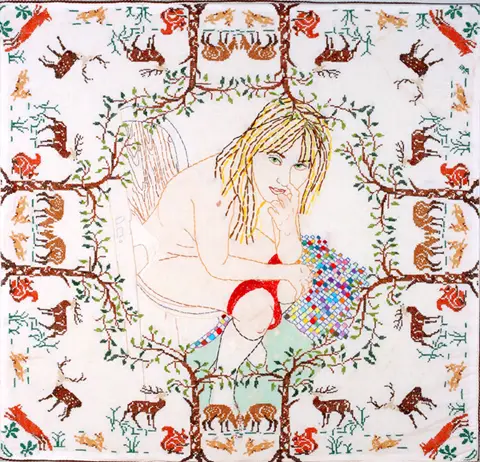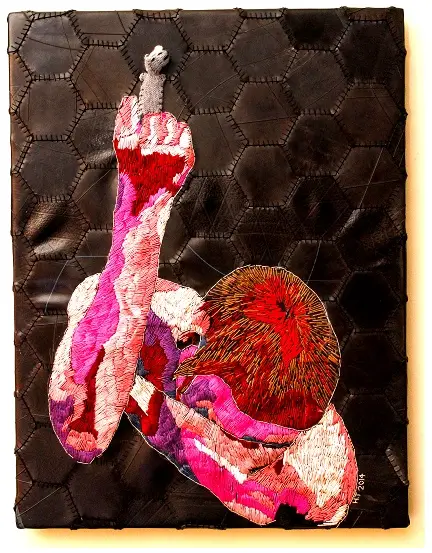
Welcome to Future Heirlooms, where we interview textile artists and explore creativity and technique.
I am not sure when I first came across the work of British artist Paddy Hartley but I do remember that I immediately thought it was fascinating and that I wanted to know more. So even though his work is far from being focused on stitching I decided that he still would be a fascinating artist to interview here. Paddy’s work is diverse in medium and technique as he allows the project to dictate the process. But the body and research consistently play an essential role. Learn more about this fascinating artist below…
Your work in general is quite varied in medium and form as well as content, can you tell us in brief the over arching concept and motivation of your art practice?
My work may appear general but a constant thematic reference is the human body and the way in which we change the body either intentionally or not and then deal with the consequences of the change. My early work examined steroid use and abuse in body building and over the years has evolved by examining subjects such as human cloning, debates between various biomedical and faith communities, domestic violence and injury, the cosmetic surgery industry and the origins of surgical facial reconstruction. I’d say I like to see how the work evolves and usually, quite an unexpected path emerges. I prefer to pursue the unexpected.
Much of your work, including Project Facade, deal with the body and the ability or weakness of it to be damaged or changed (depending on how you look at it.) What began this direction for your work?
I suppose I have just always been fascinated by how people opt to permanently change the architecture and façade of the body or alternatively, how people deal with the consequences of an unexpected physical change imposed on their body. I don’t favor the use of the term disability: the ‘dis’ being inherently negative. I prefer to think that everyone has a varying degree of ‘ability’ and how we are personally able to adapt to varying degrees of physical change fascinates me.
Most of your art work is not fiber but in your project Project Facade you deal with fiber, clothing, and embroidery. Are you self taught or formally trained in these practices? Do you think this affects your practice, if so how?
True, up until 2002 I had never worked with fabric and stitch because the work up to that point did not demand it. I let the theme of the work dictate the medium, which means I’ve developed a very broad skill base over the past 20 years. Its was a commission from the Victoria & Albert Museum to make new work for an event whose focus was the cosmetic surgery and beauty industry that prompted me to come up with the idea of designing and making Face Corsets. I had no experience of working with a sewing machine or with designing and pattern cutting but I developed my own method of making a series of patterns that fit my face. As far as working with a sewing machine, I just plugged the thing in and got on with it. Further down the line when the Face Corset work developed into an interest in reconstructive surgery (which became Project Facade) I had to teach myself how to work with digital embroidery for the embellishment of the uniforms because the work demanded it.
How has your formal art training in other mediums affected your work with fiber?
Not having a formal training with fabric doesn’t concern me and if anything I find it quite liberating and because of a lack of formal training, this encourages me to maintain a high build quality to my work. My training in Ceramics encouraged a thorough approach to research, original interpretation of the content and a high quality build and is easily applied to whatever medium or theme I work in.
What drew you to utilize embroidery as an art form in the Project Facade?
In my mind it was the logical and correct choice. I often go with what feels correct. The plastic surgeon Gillies whose patients the Project Facade work focuses on, used the fabric of the body; skin the underlying tissue, and stitch to reconstruct the faces of the servicemen presented to him. His was a very steep learning curve, developing new techniques of transporting skin from healthy locations on the body to those requiring repair. In addition, many of the recuperating servicemen took up pastimes such as embroidery as part of their rehabilitation. They too learned their skills along the way. My use of stitch mirrored both these approaches, my being untrained in the practice but with a skill base and attention to detail and as with Gillies and his patients, a pride in what I make.
Does the practice of embroidery affect the conceptual aspect of your work?
I wouldn’t say it affects the conceptual aspect other than what I’ve just mentioned, more that it allows a direct means of communication with the viewer as much traditional storytelling embroidery does.
Did working with fiber and embroidery for Project Facade have an impact on how your work has evolved or changed?
For PF Id say it did but Id say speaking generally about the project, the responsibility of treating the personal histories with respect did to a degree curtail my willingness to experiment. That last thing I wanted to do was to be seen as disrespectful to the men and their families. That, in combination with a huge admiration for their sacrifice almost drove me to end my creative career which felt frivolous and insignificant in comparison to what they had experienced. Upon reflection, I realized that the work I make is the greatest contribution I can offer to them in the telling of their stories.
Your recent work has included the Face corsets projects one of which you literally corset the face into dismorphic and grotesque shapes? This seems to reference and even be a form of torture. Can you briefly discuss this project and the experience of doing it?
The Face Corset project was a forerunner to Project Facade and was commissioned by the Victoria and Albert Museum along with support from the Wellcome Trust. The theme I constructed was built around a hypothetical. What if cosmetic facial surgery was seen as socially unacceptable: could an individual temporarily alter the structure of the face through the wearing of a garment which enhanced the lips, cheeks and smoothed the skin in the same way some surgical and non surgical procedures do? The resulting garments were designed to isolate individual features of the wearer and augment or enhance them mimicking the results of popular cosmetic procedures and then taking it further into borderline grotesque. It seemed fitting.
My desire to incorporate facial implants into the designs took the project in quite an unexpected direction. A collaboration with Biomaterials Scientist Dr Ian Thompson from Kings College London, which saw us design and produce Bioglass facial implants for 13 of his patients requiring repairs to facial bone injuries, all of which were successfully implanted. It was this collaboration that drew my interest to the origins of facial surgery and to a degree truncated the Face Corset work which I’ve just taken up developing in quite a different direction over the past year or so.
Your newer Face Corsets series involves beautifully created and crafted fashion implements that lift, change, or disguise the face in a way that seems to maintain a beauty and youth to the face. How did you go from the literal and seemingly painful corset project to these highly stylized fashion objects?
A good number of years have passed since I made the original Face Corsets and a fresh approach to a project which felt as though it hadn’t yet run its course was required. I didn’t want to pick up where I left off through fear of repeating myself, so rather than explore what the garment does to the face; I decided to explore the possibilities of the form and structure of the garment itself. Instead of the garment transforming the face, I wanted to make the garment itself transformable. I also wanted to make work which was universally fitting as the original Face Corsets were bespoke to my face. It seems somewhat ironic that a project which started out as a critique of the beauty industry has morphed into something which is now drawing considerable attention from the fashion industry. Right now, I’m enjoying exploring new materials and structure and I love to contradict the material, making the soft appear rigid and vice versa.
Does media and its obsession with youth and beauty affect your work?
That isn’t a factor in what I make or how I make.
What is the next direction or step for your work?
Further development of the Facial garments. I’m currently working on 2 collections but later this year I’ll be returning to the Project Facade work with a view to presenting new work to coincide with the 100th anniversary of WW1 between 2014 and 2018.
Describe your studio and studio practice.
I have a live/work space which makes the commute to and from work very easy.
Give us an idea of a day in the life of you.
That’s difficult as every day is different. The easiest thing to do is tell you roughly what happens every month. The majority of my time is spent in the studio researching and making but usually most months involve a regular teaching block at the Victoria & Albert Museum where I teach Photoshop. Once a month Ill travel to my gallery in Leeds to oversee the exhibition changeover and hosting the opening event. I’d say I work towards a shoot once every month or two with other work out on shoots on a regular basis. Pepper this with meetings, one off tuition bookings and guest lecturing invitations, that’s my working month.
As a professor how does this role and experience affect your work?
The tuition and lectures I deliver are for me a welcome digression to my design work and I do enjoy talking about the process of research, development, designing, making and discussing professional practice in the creative industries. I suppose there’s a slightly parental element that comes into it, hoping that my audience learn from my mistakes and build on the things I got right.
What else do you spend your time doing? hobbies? family? jobs? activities?
It may sound a little unfortunate but I don’t really have much time outside of designing and making, running my gallery, lecturing. I like to keep time-off simple. I like to cycle, cook, eat what I’ve cooked, spend time with those closest to me and wrangle my two cats Dan and Lucie.
Where can we see your work?
Best place to see my work are at my websites:
Until next time Keep Stitching!

